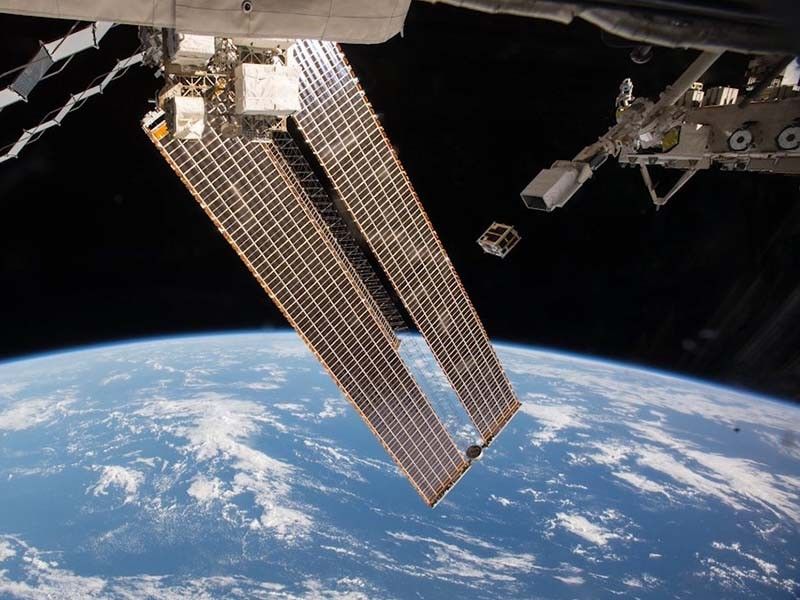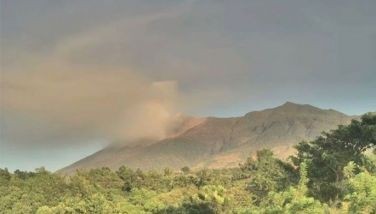61 years since Gagarin flight, space tech and research within reach for Filipinos

MANILA, Philippines (Updated 12:01, April 14) — Space research and development is becoming more affordable for small countries, and for a developing country like the Philippines, it is a dream that has turned into reality.
Six years ago, the country's first microsatellite, Diwata-1, which Filipino and Japanese scientists and engineers worked on, was launched into space.
The 50-kg microsatellite would train its cameras back to Earth, and collect data for disaster response and management, and environment assessment.
The country now has six small satellites in space. Three more are under development, with the Multispectral Unit for Land Assessment Satellite (MULA) being the country's first commercial-grade satellite of its kind.
Filipinos are not strangers to space, according to Dr. Rogel Mari Sese, the chair of the Aerospace Engineering Department at Ateneo de Davao University.
In the latter part of the 1800s, the country had the Observatorio Meteorologico de Manila, now known as Manila Observatory, which first conducted activities in weather observation and then later ventured into studies related to astronomy, he told Philstar.com.
It was only a decade ago, however, that the Philippine government started to recognize the importance of space-related activities because of two major events.
"The first one was in 2012 during the incident with Scarborough Shoal and when everything else is happening in West Philippine Sea," Sese explained, adding that the absence of satellite imagery is among the reasons the country is having problems securing its waters.
"The second one, in 2013, was Typhoon Yolanda, which devastated the whole Central Visayas, Samar, Leyte, and Tacloban," he added.
Sese actively advocated for the passage of Republic Act 11363 or the Philippine Space Act that established the national space agency— which was later on signed by President Rodrigo Duterte in 2019.
READ: PhilSA ushers in Philippine space age
Sese said space research and development is now a possibility even for countries with smaller GDPs compared to the Philippines, like Luxembourg and New Zealand, which were already able to establish their own space agencies.
Space is not a 'far-away' notion
On April 12, the world celebrated the International Day of Human Space Flight. Sixty-one years ago, Russian cosmonaut Yuri Gagarin flew to space, a historic moment which paved the way for space exploration. The event marked the beginning of the space era, according to the United Nations.
"When people think of space, they think of it as a very far-away notion...that it's not relevant to our daily lives, but the reality is, the technologies and applications from space are finding their way into our daily lives through this global space economy, through the many services and products that we come to depend on," Philippine Space Agency (PhilSA) Director General Joel Marciano told Philstar.com.
For him, participating in the space economy is a national imperative since it contributes to the local economy and helps develop a highly-skilled workforce.
PhilSA is currently developing the country's fledgling space sector — both in the upstream and downstream segments.
The upstream segment refers to the manufacture and launch of objects into space like satellites, rovers, space probes and other space crafts into orbit. Meanwhile, the downstream segment uses these projects to deliver products and services for scientific use on Earth.
The PhilSA's main thrust right now is to ramp up public awareness and appreciation of space-related activities and projects, Marciano said.
On its website, PhilSA said its mission is to "promote a robust Philippine space ecosystem and help create value in space for and from Fillipinos and for the world."
Having a space agency, such as the PhilSA, opens doors to more opportunities for local scientists, Joshuel Barroso, the chief scholastic officer of the University of the Philippines Los Banos (UPLB) Astronomical Society, said.
In 2013, UNESCO reported that there were only 189 researchers per 1 million people in the Philippines, which was far from the standard of at least 380 researchers per million.
Barroso, who is an undergraduate student taking up Applied Physics at UPLB, said that Filipino scientists are "underappreciated", and that they deserve better.
"The large disparity in understanding space science is largely affected by people's misconceptions and people's underappreciation of scientists so we take stride in promoting space science and astronomy as a valid sector in education [and as something that] branches out to an appreciation of the sciences in a larger picture," he told Philstar.com.
'Improving the quality of life'
The space program covers all upstream and downstream activities as well as the users of all these products, according to the PhilSA.
Such a program must always look for ways where space science and technology can contribute and improve the quality of life, Ateneo de Davao's Sese said. "It's really more about bringing the benefits of space so that ordinary Filipino can experience it and appreciate it."
While the country's space program is small compared to the rest of the Philippine government's operations, it is appropriate for its size as it seeks to solve problems on the ground, according to Pecier Decierdo, a science communicator at The Mind Museum, a science museum in Taguig City.
"They're dipping their toes in space by sending these Filipino-made microsatellites and nanosatellites with the goal of developing the know-how of our engineers and scientists here in the country in making and using space technology in order to solve ground-based problems like monitoring the health of our forests, our territorial integrity, and looking at the effects or impacts of natural hazards," he told Philstar.com.
Decierdo said the country is making do with space technologies that are small, targeted and efficient, which, in turn, contribute to improving research efforts.
The Mind Museum, which features several exhibits related to space science as well as the country's satellites, has partnered with the Science department's Philippine Council for Industry, Energy and Emerging Technology Research and Development to popularize astronomy.
Benefits of space research
If all satellites orbiting the Earth are switched off, the navigation app Waze, and food delivery services will cease to work. A portion of the internet will also stop working, PhilSA's Marciano said.
"So many conveniences that we have now also result from mankind's venture into space [such as] wireless headsets that we use now. [American astronaut] Neil Armstrong used one when he walked on the surface of the moon to utter those immortal words," Marciano said.
"The temperature sensors that you encounter at the entrance of establishments where you just hold your palm up like that and it measures your temperature — it uses the same principle as what they used to measure the temperature of planets and stars," he added.
According to him, it is important to have the foresight to invest in an idea that may benefit humanity in the future.
For The Mind Museum's Decierdo, the presence of a space program has a sociological impact in the local scientific community, adding that "it is already starting to encourage more talent to stay here in the Philippines for longer."
Julius Sempio, one of the scientists who worked on the Diwata-1 satellite, believes that having a space program can help alleviate poverty and spur economic growth.
"Space tech can be of great help to us in improving our disaster response. In pursuing space activities, we might have time to discover technologies which consumers can use...like Wi-Fi, [which was] borne out of a failed space tech project that wanted to study blackholes," he told Philstar.com in Filipino.
Sese — who is now the project head of ACCESS Mindanao, a research and advocacy program of Ateneo de Davao University that seeks to improve Wi-Fi access in remote areas in the southern Philippines— has witnessed firsthand how space technology can help communities.
He and his team were able to install a satellite network across 14 schools, hospitals, business and communities in Mindanao in just two years since the project's launch.
The project was able to improve internet access in isolated places such as Tawi-Tawi, Cotabato City and Lake Sebu, among others.
"Space technology doesn't need to be far out and out of this world. Well, it technically [involves technologies that travel] out of this world, but it doesn't have to be something high-level which ordinary Filipinos cannot appreciate," he said in Filipino.
- Latest
- Trending


































